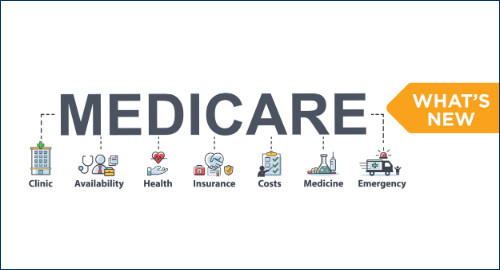Understanding Medicare costs
What does Medicare cost? This is a common question that many who are new to Medicare, their caregivers and healthcare consumers, in general, have. Each year, basic costs for people with Medicare change. A good resource to check out is the Centers for Medicare and Medicaid Services (CMS) breakdown at a glance. To further help with understanding Medicare costs, we decided to break down the costs for each “type” of Medicare.
Original Medicare is basic health insurance from the U.S. government for hospital costs (Part A) and medical costs (Part B). It covers hospital stays (Part A) and outpatient medical services (Part B). What you pay:
- You will have a deductible to pay on both Parts A and B.
- In most cases, a premium is subtracted from your Social Security check each month. You will have additional costs for medical services and care.
- You pay for all prescription medications.
Note: Original Medicare covers 80 percent of eligible doctor and hospital visits, leaving you to pay the remaining 20 percent. That means one hospital stay could cost you thousands of dollars — and there is no limit to the amount you would have to pay.
Medicare Advantage (Part C) plans from private health insurance companies have more benefits than Original Medicare. They are all-in-one plans that include Original Medicare, and usually Part D prescription drug coverage. Some plans also include extra benefits, like rides to appointments, gym memberships, and optional dental and vision coverage. What you pay:
- Original Medicare Part B monthly premium.
- In some cases, a monthly premium for the Medicare Advantage plan.
- You might also have to pay a deductible, as well as co-pays for some services, depending on the plan.
Note: Medicare Advantage plans have a maximum out-of-pocket (MOOP) amount you’ll spend annually for healthcare costs. This amount varies by plan. Also, Aspire Health Plan HMO and HMO-POS plans include prescription drug coverage. Visit our plans & rates page for more benefits highlights.
Medicare Supplement (Medigap) plans from private health insurance companies cover more medical and hospital costs than Original Medicare but do not include extras you get with many Medicare Advantage plans. They cover everything Original Medicare covers in Parts A and B — but instead of 80% coverage, you get up to 100% coverage. They also help pay for co-payments and co-insurance. What you pay:
- Original Medicare Part B monthly premium.
- A monthly premium for the Medicare Supplement plan.
- You might also have to pay a deductible and co-pays, depending on the plan.
Note: You can’t enroll in both a Medicare Advantage and Medicare Supplement plan. For help deciding, we recommend reading our previous blog post.
Medicare Prescription Drug Plans (Part D) from private health insurance companies are plans you buy separately to help you cover the cost of medications. They cover prescription medications. What you pay:
- A monthly premium.
- You might also have to pay a deductible and co-pays on some prescriptions.
Note: If you choose Original Medicare, plus a Medigap plan, plus a Part D prescription drug policy, this means three kinds of coverage with a premium for each. Medicare Advantage plans typically have lower premiums and also offer the convenience of having one policy, rather than juggling three different types of coverage.
You may qualify for financial assistance. There are all kinds of financial assistance programs available to help you pay for Medicare. Call one of our Health Plan Advisors at Aspire Health Plan and they will walk you through your options and help you get the financial aid you need. You can reach us at (855) 378-9680. (TTY users call 711.)
H8764_MKT_MedicareCosts _Blog_0121_M










